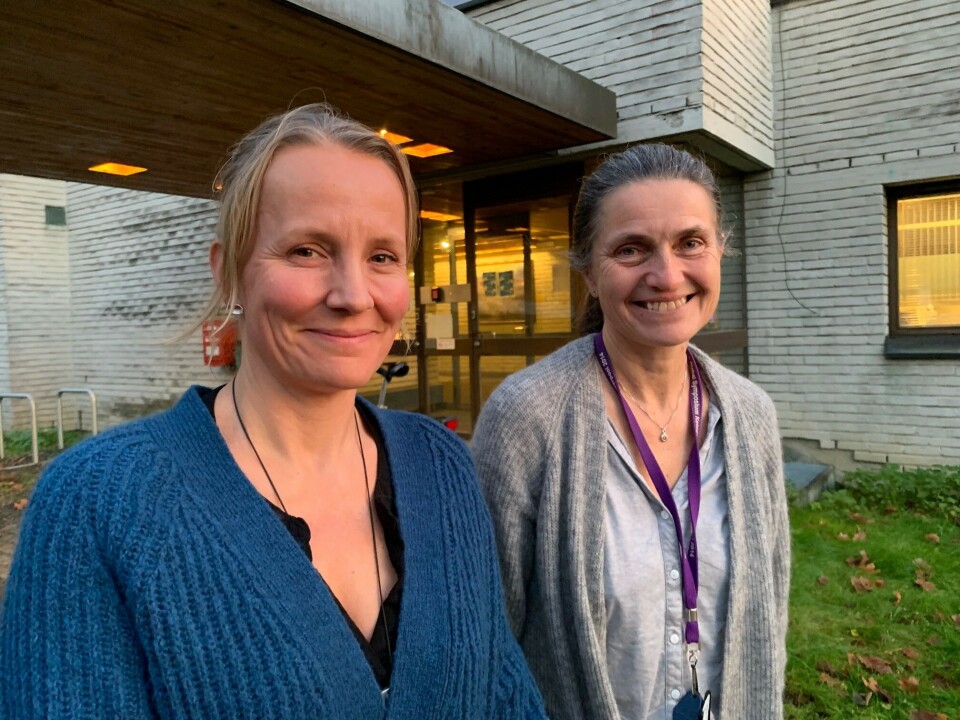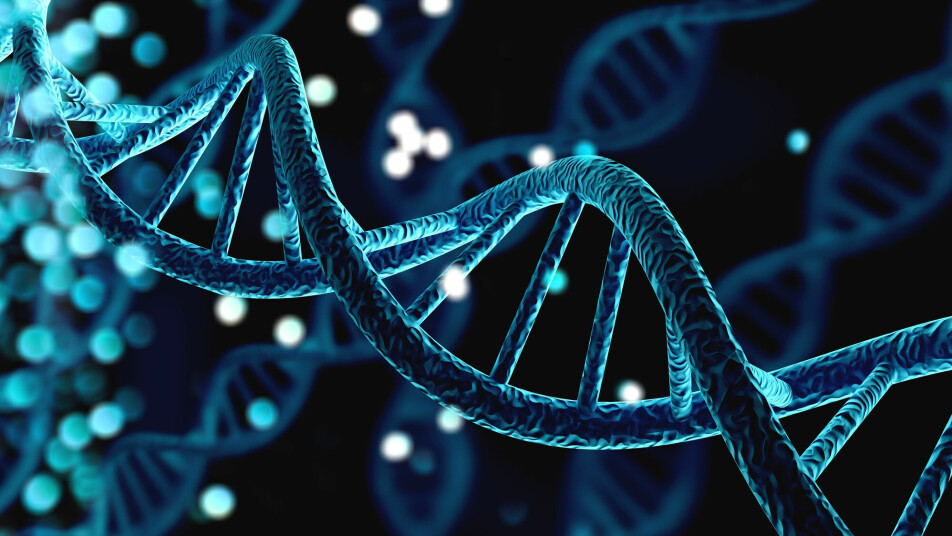
Keto diet is a miracle cure for some people with epilepsy – but scientists don't know why
When Cathrine Adriaenssens was 33, she had such severe epilepsy that her doctor feared she might die from it. Today she is completely healthy.
In a way, Cathrine Adriaenssens has two stories about epilepsy. One story went pretty well and one almost ended completely wrong.
Adriaenssens had epilepsy as a child. Most of the seizures were so-called absences – small episodes of 15-20 seconds where she blanked out and wasn’t aware of what was happening around her. The seizures sometimes occurred multiple times within a single school period.
She also had some generalized tonic-clonic seizures – the large convulsive seizures that many people associate with epilepsy. This led to her being hospitalized and diagnosed with epilepsy.
Adriaenssens was put on medication which greatly improved her condition. Eventually she was so healthy that she didn't need the medication for a while.
But then the story took a dramatic turn.
Possible death sentence
Adriaenssens had an accident in which she hit her head hard. Afterwards her epilepsy returned and was much worse than before.
“Then it was back to the hospital. I tried all kinds of medication,” she says, “but nothing helped.”
“I was just lying there, completely out of it. The seizures just went on and on.”
Future prospects were not good. It looked as if Adriaenssens would have a life marked by illness and disability. At worst, her epilepsy could lead to her dying at a young age.
“I was 33 years old and had two children. You freak out a bit,” she says.
But her GP didn’t give up. He did his own research to try and find help for Adriaenssens. Finally, he persuaded Norway’s National Centre for Epilepsy (SSE) to admit her.
Started straight away
Adriaenssens tried several medications at SSE, but soon one of the doctors suggested that she might consider trying the ketogenic diet.
The ketogenic diet is an extremely low-carb diet that consists of almost no carbohydrates, a moderate amount of protein and a lot of fat. It has now been well documented that this treatment can have a beneficial effect on epilepsy in children.
Studies in recent years have also shown that the diet works for some adults with intractable epilepsy.
“I figured it couldn't hurt,” says Adriaenssens.
She wanted to start the diet straight away, even before she had secured a place in the SSE training course.
“I googled and read and read, and then I got started.”
Regained full health
The first effects did not take long to appear.
“My brain fog disappeared in three days. It was a huge relief. I had had it constantly for several years. It’s so tiring to forget things all the time.”
“Gradually, I also had fewer and fewer epileptic seizures.”
Slowly but surely, Adriaenssens was able to reduce her medication, from several drugs and double doses to half a dose of one medicine.
Today she feels completely healthy.
“I haven't noticed anything epilepsy related for two years. I'm perfectly fine. Last March I got my driver’s licence back. That was great,” says Adriaenssens.
People with epilepsy whose seizures cannot be managed well enough are not allowed to drive, because seizures can lead to traffic accidents.

Most people get better with medication
Although Adriaenssen's second story with epilepsy started with a possible death sentence, it ended astonishingly well. The ketogenic diet worked almost like a miracle cure for her.
But is this strict diet the solution for everyone with severe epilepsy?
Clinical nutritionist Magnhild Kverneland and doctor Kaja Selmer at the National Centre for Epilepsy are doing research on the ketogenic diet and epilepsy.
“There are a lot of different medicines for epilepsy, and doctors almost always try medications first,” says Selmer.
The drugs manage epilepsy well for two-thirds of the patients.
Professionals categorize the final third of patients as drug-resistant. The medicines are not able to adequately suppress the seizures, or the side effects become too strong.
This is where other types of treatment come in. Epilepsy can be treated with brain surgery, for example. And then there’s the ketogenic diet.
Works for many children
For children with drug-resistant epilepsy, the ketogenic diet is now an established treatment. In recent decades, several large studies have shown that the diet is effective for some people.
“International results have shown that about half of epilepsy patients experience at least a 50 per cent reduction in seizures,” says Kverneland.
“A small percentage recover completely, almost as if by a miracle.”
More recently, studies on adults have also started. Kverneland, Selmer and their colleagues are behind several such investigations.
A study from 2018 showed that 25 per cent of the participants had fewer seizures on a ketogenic diet.
The average effect was not very large, but the difference between the participants was significant. Among those who experienced improvement, some got much better, while others only experienced a small improvement.
Diet saves some
This matches the researchers' experiences with the patients who receive treatment at SSE.
“Some patients say that the diet has saved them. And a few continue on the ketogenic diet for years,” says Kverneland.
In some cases, Kverneland and Selmer also suspect that the treatment might also affect other symptoms, such as anxiety and sleep problems.
“In the clinic, we’ve talked a lot over the years about the fact that we think the diet has an effect that isn’t just about the seizures. We’ve found that the patients seem to feel better psychologically, despite the fact that following this diet is very taxing,” says Kverneland.
“Research on possible psychological effects is scant, but some studies carried out in Sweden showed that a ketogenic diet improved sleep in children with epilepsy.
The researchers nevertheless stress that the dietary treatment is by no means a panacea for everyone. It is also important to work with a healthcare professional when starting the diet.
The ketogenic diet is very restrictive and contains a lot of fat, so it is necessary to check that the patient is not suffering from a lack of important nutrients or too much cholesterol in the blood.
And not everyone is helped by the diet.

Some patients became much worse
“A lot of patients don’t experience any positive effect,” says Kverneland.
Some patients have no reduction in seizures, others experience unpleasant side effects, and some patients’ condition can even get worse from the ketogenic diet. In one of the studies the researchers did, one participant’s seizures doubled.
“One of the big questions we need to find answers to is precisely how we can predict who will respond well and who won’t,” says Selmer.
A fundamental challenge is that researchers do not know why the ketogenic diet works.
When you switch from a normal diet to a ketogenic diet, major changes occur, both in the intestinal flora and in metabolizing energy in the body. The cells switch from producing energy from glucose to making energy from fat.
The ketogenic diet involves large-scale re-regulating of a number of molecular mechanisms in the body. And they can in turn cause a cascade of other changes downstream in our bodily systems.
So given all these complicated processes, what reduces the epileptic seizures in some people?
Many different mechanisms are probably at play. Recently, for example, a study came out which suggested that the molecule mTOR might play an important role.
Selmer and her colleagues have begun to investigate another possibility.
Abnormal gene regulation
The researchers look at epigenetic changes.
Epigenetics – somewhat simplified – are chemical tags on the DNA that regulate how our genes are expressed. These tags act as gatekeepers and are absolutely necessary for the brain to develop and function normally.
Previous research has shown evidence of abnormal epigenetic regulation in people with epilepsy. For example, some studies have shown that tissue from people with epilepsy has more chemical tags on DNA than tissue from healthy people.
The researchers wonder if this might mean that the nerve cells are firing electrical signals more readily and that uncontrolled electrical discharges could thus cause an epileptic seizure to occur more easily.
But this is complicated.
There are also indications that epileptic seizures themselves can change epigenetic regulation. Could it be a vicious circle, where dysregulation leads to seizures which in turn lead to more dysregulation?
Perhaps this is where the ketogenic diet comes in. Some animal studies suggest that the diet resolves something about the dysregulation. Does it happen in humans too?
In a recent study, Selmer and her colleagues mapped epigenetic changes in the blood of 58 patients before and after a 12-week period of following a ketogenic diet.

Many epigenetic changes
The results showed that changes occurred precisely in the epigenetic regulation realm during the time patients were on the ketogenic diet.
“An interesting effect was that the amount of chemical tags was reduced – that is, it looked like the diet reversed the abnormal epigenetic pattern,” says Selmer.
There had also been changes in the metabolism of fat in the body and in how the genes linked to epilepsy were regulated.
The findings also showed changes in genes that control the metabolism of the substance inositol phosphate. Researchers had previously suspected that an imbalance in the metabolism of this substance might play a role in several neurological diseases, including epilepsy.
Small pieces in a big puzzle
Selmer and the other researchers think these are interesting findings, with some new puzzle pieces falling into place. But many more pieces are still needed before an understandable picture emerges.
For example, the researchers do not know the mechanisms by which the ketogenic diet can change epigenetic regulation.
“One hypothesis,” says Selmer, “is that you change the bacterial flora in the gut and that this in turn affects the epigenetic pattern. We didn’t examine intestinal flora in this study, but will be doing so in another study on children.”
Ketogenic diet can be burdensome
Epilepsy is a very complicated disease that can be quite different from person to person. Presumably, why the ketogenic diet works can have many very individual answers.
“It is also important to remember that patients who start a ketogenic diet often have intractable epilepsy that is difficult to treat. They typically have had the disease for many years and may have tried dozens of different medications without success,” says Selmer.
She and her colleagues hope that their research will eventually make life easier for these patients. Might it be possible to create medicines that have the same effect as the ketogenic diet?
That would be a huge improvement, because there is no doubt that living on such a strict diet is very demanding.
“It can be difficult to understand just how invasive this diet is,” says Kverneland.
Her work includes preparing patients for making the change to a ketogenic diet.
“We start with a patient coming for an initial stay and an intake survey where we have several conversations and get to know the patient.
The doctors try to figure out which patients are motivated and could benefit from trying the diet. This group receives a comprehensive course on how to manage the diet in practice. After a trial of three to six months, the patient and the therapists evaluate the effect and weigh it against the disadvantages of the diet.

Sharing keto food on Instagram and Facebook
Adriaenssens knows all about the upheavals this form of treatment has. Although the health effects were very motivating, she does not deny that it can also be tough going.
People around you don't always understand that you eat differently. And familiarizing yourself with what you can eat and how to cook when half of the usual ingredients can no longer be used is challenging.
“At the beginning I got a bit paranoid and wondered whether I’d be stuck eating only eggs and bacon.”
“But you can actually eat really well and have plenty of variety on a ketogenic diet. My diet consists of a lot of vegetables, fish and meat. I don't take nutritional supplements, and my blood tests that I take regularly show that everything’s fine,” Adriaenssens says.
“Eventually you also learn some tricks that make life a little easier, like that you can buy ready-made bearnaise sauce!”
Adrianessens started an Instagram account and a Facebook group called Keto som medisin (Keto as medicine) in 2020, where she posts recipes and photos of the dishes she makes.
She had a practical motivation for starting the sites.
“To be completely honest, I started because I always have to cook my own food if I visit my parents or sisters. And then I thought that if I post pictures and recipes, I might be able to come to a ready-made meal,” she says with a good laugh.
“But I usually still have to help cook the food.”
———
Read the Norwegian version of this article at forskning.no





































